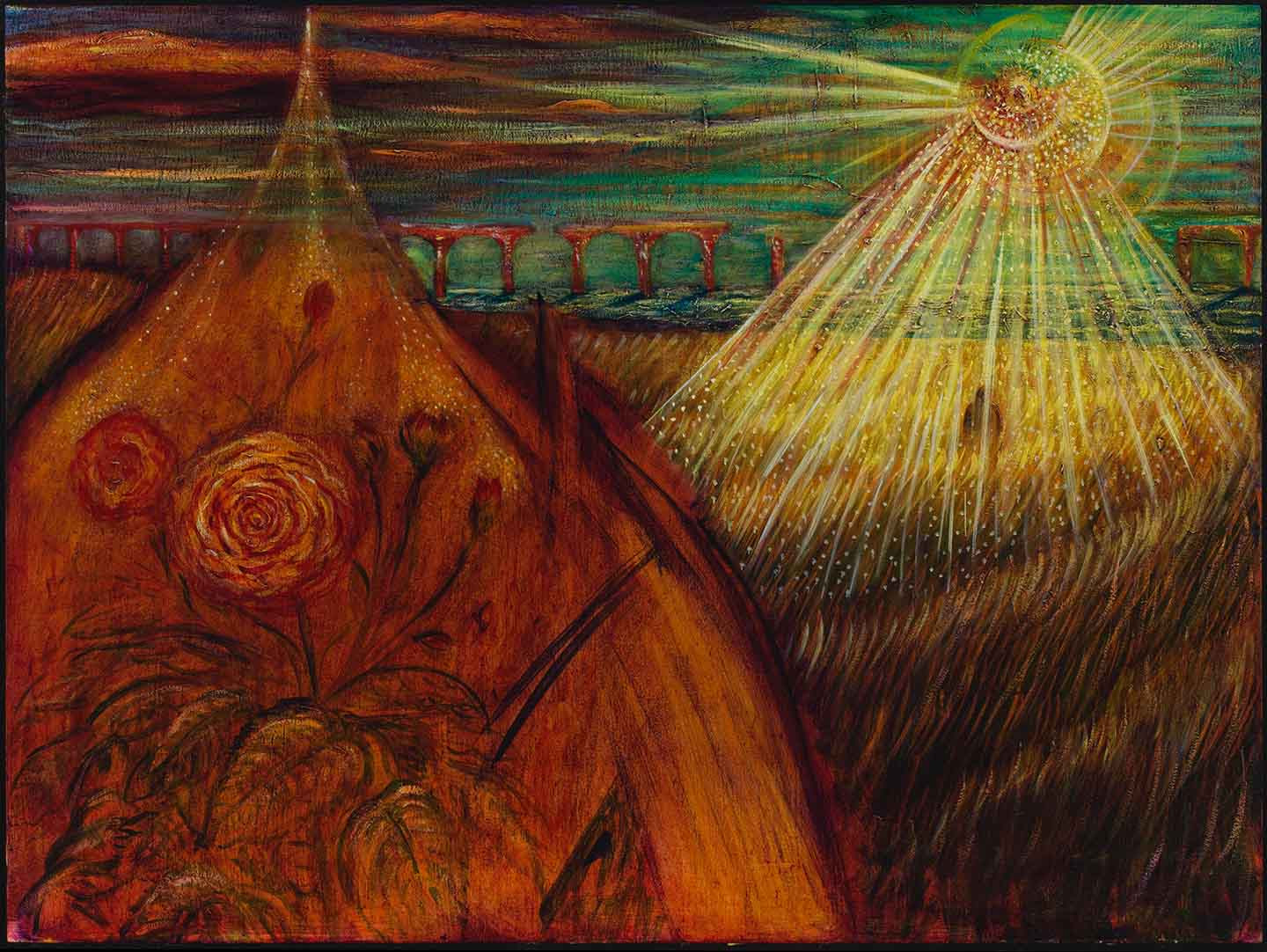December 8 – January 12, 2018
Kirk Hopper Fine Art is located at 3008 Commerce Street, Dallas, Texas 75226 in the Deep Ellum neighborhood.
Kirk Hopper Fine Art is excited to announce an upcoming exhibition for artists Annabel Livermore and Mary McCleary (in cooperation with Moody Gallery, Houston). Reckoning, curated by Susie Kalil, brings together two fiercely independent artists who live and work in isolation outside the art mainstream. Both produce layered, ambiguous narratives that address the core issues of our time. Raw, tactile, eviscerating and more relevant than ever, Livermore’s luminous, visionary paintings and McCleary’s illusionistic mixed media collages both skewer and reimagine the “hot zone” topics of the real world: power, greed, religion, an unforgiving economic order.
We are living in times of huge existential crisis, in which our country has become increasingly tribal with divisions at the intersection of faith and politics. A “reckoning” is not only timely but urgent: It is the moment of truth – a time when one is called into account for actions to fulfill one’s promises, or the avenging of past mistakes and misdeeds; a time of bearing witness; an appraisal or judgment; a time in the future when forced to deal with unpleasant situations otherwise avoided. Both artists construct compelling realms, rich with primal associations.
In a way true visionaries do, Livermore has managed to get outside herself, beyond herself, and insinuate a poetic understanding of the plight of souls. Her fervor is jarring in its passion to celebrate the spirit with an almost mystical conviction. In October 22, 2010, the night 13 young innocent people were gunned down in their host’s home while celebrating a birthday party, an immense creature straddles the mountains of Juarez, Mexico. It is an image of emotional disorder, a field of glowing, explosive color, spoiled and invaded. In Fatima, the transitory, otherworldly light seemingly transfigures the commonplace but also the very act of arrogating to oneself the powers of divinity. Here, Livermore quietly reaffirms the occult power of painting with great sweeps of color, punctuated with dabs, flecks and staccato strokes. Her paintings are about dreams, moments, perceptions, sudden insights. Livermore’s sense of time is as fast as a running river of events where everything seems to touch and blend. Livermore lets us see invisible things, invents cosmologies, explores consciousness and endeavors to make the injustices, as well as the mysteries, of the world palpable.

Annabel Livermore. Fatima, 2018. Oil on Panel. 39 1/2 x 52 inches
Who are we? Where are we going? We hunger for genuine narratives that connect us to symbol and ritual, coming to terms with our place in the world, if only to find our way forth. Both artists explore the extremes of spiritual and social upheaval, as well as the very essence of storytelling and the role it plays in our lives.
McCleary’s lushly sensuous, intensive collages combine painterly craftsmanship and bold iconography. Her subject matter is taken from religion, science, history and literature- the sources of big themes. The narratives are off-kilter, slightly out of balance. At their core are issues of paradox- deception, illusion, blindness- but also elements of faith, the suggestion of hope as guiding forces. Her epic works are about our longings, our fallen state, about beautiful things leaving this world, never to return. The subjects McCleary uses are friends, colleagues and family members; the materials she chooses to cover the surfaces are common and extraordinary, handmade and manmade- glass, sticks, lint, mirrors, string, small plastic toys- chosen for texture and color, but also for their allegorical potential. McCleary attaches them on heavy paper, much in the way a painter builds layer upon layer of pigment on canvas.
Mary McCleary. Time is Combustible, Memories Smoke, 2018. Mixed media collage on paper. 21 7/8 x 30 1/8 inches.
In Holy Mysteries (2010), a wondrous snowscape reveals itself to be a catastrophic plane crash. In Colorblind (2018), a hunter with rifle trained on his prey serves as metaphor for our anxious times of information overload. How do we determine what is true or false? For the unseen deer, such a reckoning is a matter of life and death. In Time is Combustible, Memories Smoke (2018), a young man looks back at an encroaching fire, even as he attempts to outrun time itself.
Throughout Reckoning, Livermore and McCleary set up metaphorical relationships among and between images and words, weaving mythic tales out of ordinary experience. Moving seamlessly between the gritty realm of the real and the more primary-colored world of the fable, the artists explore the ways superstitions, cultural beliefs, or supernatural legends reveal – and reflect back – our identities and communities: our fears, hatreds, sympathies and dreams.

|
||


